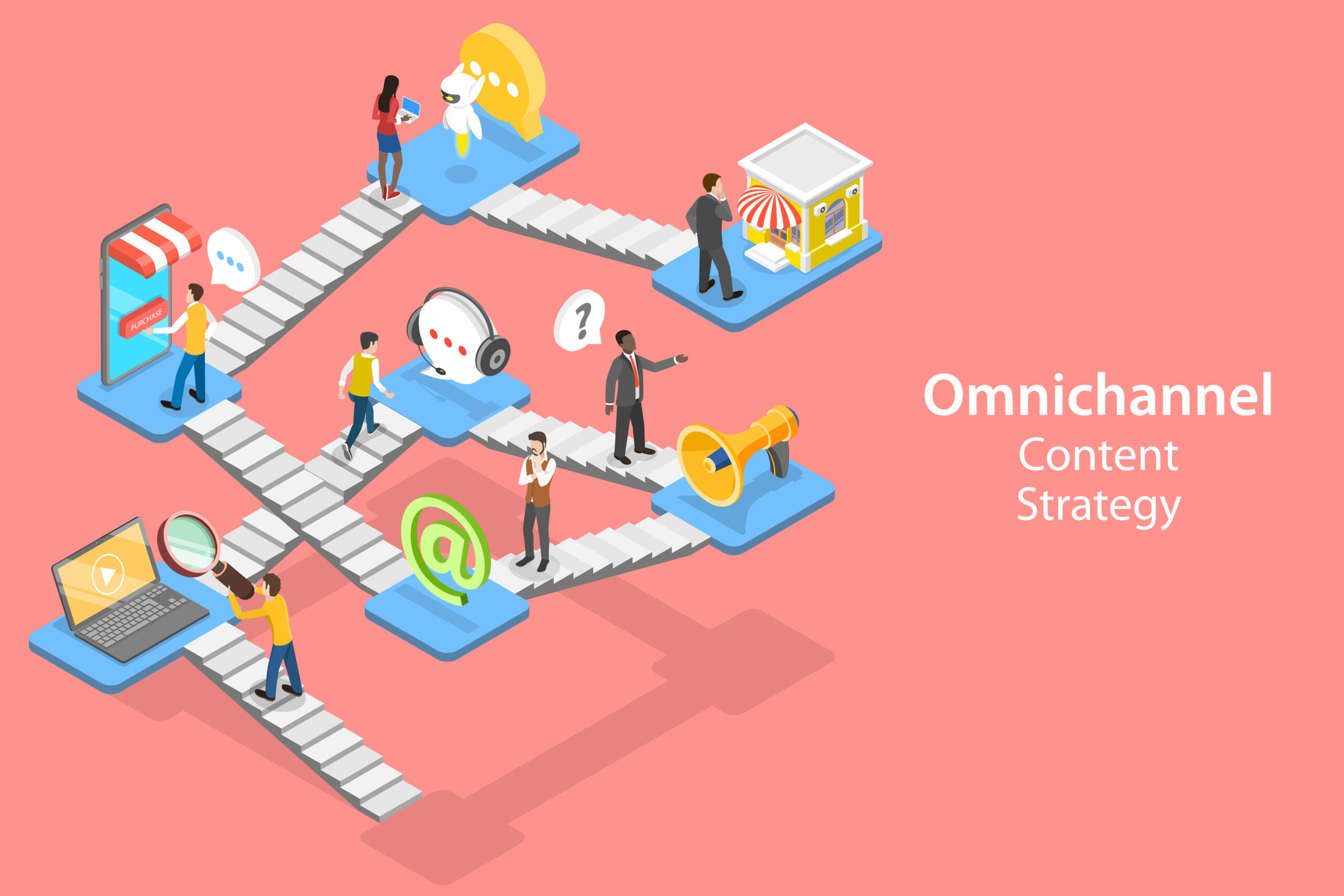Introduction
Email marketing is one of the most widely adopted strategies in digital marketing. For medium-sized businesses, it is a direct and cost-effective way to reach customers, donors, or subscribers. Most organizations, however, lean toward single-focus emails, designed to drive one specific action—whether it’s making a purchase, signing up for an event, or donating. This approach is familiar, focused, and seemingly straightforward.
But there’s a subtle flaw here. With single-focus emails, your chances of engaging a diverse audience diminish. Your message may resonate with some readers, but for others, it may fall flat. By focusing solely on one call-to-action, single-focus emails limit the opportunities to engage a broader audience with different interests. As a result, the all-important engagement metrics—click-through rates, open rates, and ultimately, conversions—can often fall short of expectations.
Enter the newsletter-style email: an approach that offers a variety of content in a single message. Unlike single-focus emails, newsletter-style emails cater to a range of interests within your audience, leading to higher engagement and better long-term loyalty. With multiple points of interaction, newsletter emails provide readers with a richer experience, making them more likely to engage. Let’s break down how newsletter-style emails can outperform traditional single-focus emails—and why they may be the better choice for your business.
Defining the Terms
To understand why newsletter-style emails are often more effective, it’s important to first clarify what we mean by “newsletter-style” versus “single-focus” emails.
Newsletter-Style Emails: These emails are designed with multiple sections, each offering different types of content—like news, product updates, stories, upcoming events, or highlights from your organization. Their primary goal is to engage readers by providing a mix of information and giving them options. A well-crafted newsletter email includes several calls-to-action (CTAs) linked to different parts of the content, encouraging readers to interact based on their individual interests.
Single-Focus Emails: In contrast, single-focus emails center on one main message or action, such as “Donate Now” or “Sign Up Today.” Everything in the email points toward that one action, often with a single CTA and minimal supporting content. While this approach can be effective for time-sensitive promotions or clear-cut actions, it is generally less flexible in catering to varied interests.
A newsletter-style email differs fundamentally in intent. Instead of funneling readers toward a single action, it seeks to create engagement across multiple points. This breadth of content gives readers choices, making it more likely that they will find something relevant to click on or interact with. With this approach, you’re not just focusing on one potential outcome; you’re engaging readers on their terms, which is key to building lasting relationships.
The advantage? Newsletter-style emails provide more opportunities for engagement. By offering a range of topics and CTAs, you increase the likelihood that readers will find content that appeals to them personally, leading to higher engagement rates. This approach shifts email marketing from a transactional interaction to an ongoing conversation, enhancing overall customer loyalty and engagement over time.
Understanding the Flaw in Single-Focus Emails
Single-focus emails are often designed with a straightforward purpose: they drive one specific action, whether that’s a donation, a product purchase, or event registration. On the surface, this seems logical—if you want your readers to act, why not make it as simple and direct as possible? However, this simplicity is both the strength and the limitation of single-focus emails.
The flaw with single-focus emails lies in the assumption that all readers share the same intent and are equally ready to take the proposed action. In reality, email subscribers are a diverse audience, spanning various interests, engagement levels, and stages in their relationship with your brand. For example, some may be familiar with your organization but not ready to donate; others may be long-term supporters who would like to learn about updates or new initiatives. When you send a single-focus email, you’re essentially giving your audience an all-or-nothing choice: act on the specific CTA or ignore the email altogether.
This approach can lead to missed opportunities for engagement. Imagine receiving an email with a single call-to-action, such as “Donate Now.” While this may resonate with a portion of your audience—specifically those already motivated to donate—it might not be compelling for others. The recipients who want more information about your cause, those interested in upcoming events, or those looking for testimonials on the impact of their potential donation may feel disconnected. As a result, they may not engage with the email at all, leading to a wasted opportunity.
Additionally, data supports the limitations of single-focus emails. A study from HubSpot found that emails with multiple links or calls-to-action across different content sections achieved a 27% higher click-through rate than emails with just one CTA. This suggests that providing multiple options within an email gives readers more chances to interact and respond to content that resonates with them individually. A single CTA approach forces a one-size-fits-all message onto a diverse audience, making it difficult to effectively engage each recipient.
Furthermore, single-focus emails often fail to capture reader curiosity or offer a sense of choice. Human psychology shows that individuals appreciate having options, as choices help them feel in control of their decisions. When presented with a range of CTAs, readers are more likely to find something personally relevant to click on. In contrast, a single-focus email does not leverage this inclination, potentially reducing its appeal to a wider audience.
In essence, single-focus emails are limited in their ability to adapt to a diverse subscriber list. By focusing narrowly on a single action, these emails miss the opportunity to create a more robust engagement experience that accounts for varied interests and needs within your audience. This flaw restricts engagement, ultimately impacting click-through rates, conversions, and, in the case of nonprofits, donor retention.
The Essential Element of Engagement: Content Variety
Content variety is the missing ingredient in single-focus emails, and it is a central strength of newsletter-style emails. By presenting diverse content within a single message, you’re able to appeal to a broad spectrum of interests, enhancing the likelihood of reader engagement. Each section of a newsletter can be tailored to cater to different segments of your audience, ensuring there’s something for everyone. This inclusivity is key to fostering a stronger connection with subscribers.
For example, newsletter-style emails might include a combination of organization updates, upcoming events, impact stories, and personal testimonials. Each of these content types speaks to different motivations. Some readers may be most interested in learning about the tangible impact of your organization, while others might be looking for opportunities to get involved or attend events. By including various content blocks, you allow readers to select the content that resonates most with them, creating a personalized experience within a single email.
Campaign Monitor’s research shows that emails with a variety of content have a 19% higher click-through rate than single-focus emails, as readers are more likely to find something relevant. This diverse approach taps into multiple engagement points, which increases the likelihood of readers taking action. When each email section includes a specific CTA, you provide multiple pathways for engagement, catering to different stages of the customer or donor journey.
Beyond increasing click-through rates, content variety in newsletters also fosters a deeper emotional connection with readers. When an email includes multiple sections, each with its own unique message, readers can explore your organization in a more holistic way. They’re able to see not just a single request for support but a rounded picture of your mission, achievements, and community. This comprehensive view builds trust and loyalty, transforming subscribers from passive recipients into active participants in your organization’s journey.
Furthermore, content variety encourages ongoing engagement, as subscribers are more likely to open future emails knowing they’ll receive a range of updates and opportunities. When each email offers fresh and varied content, readers are less likely to feel fatigued or disengaged. They’ll anticipate the arrival of your emails, knowing that each one will offer value tailored to their interests.
Ultimately, newsletter-style emails leverage content variety to provide a richer, more engaging experience. By doing so, they turn each email into a valuable touchpoint, creating an ongoing conversation that nurtures relationships and sustains interest over time. This element of variety is what single-focus emails lack, making newsletters the superior choice for long-term engagement.
Aligning with the Trend: Why Newsletter-Style Emails Fit Today’s Preferences
As consumer expectations evolve, so do their preferences for content consumption. Today’s audiences increasingly demand personalized, meaningful content that goes beyond a straightforward sales pitch. People expect brands to provide value, insights, and stories—not just promotions. This shift aligns perfectly with the newsletter-style email format, which offers readers a well-rounded, value-driven experience.
A study by Mailchimp reveals that organizations using newsletter-style emails achieve a 32% higher engagement rate over time than those relying solely on single-focus emails. This trend reflects a growing preference for content that keeps readers informed, connected, and involved with the organization on multiple levels. With newsletter-style emails, brands can deliver on these expectations by including updates, stories, and insights that go beyond a single transaction or call-to-action.
Furthermore, today’s consumers are often overwhelmed with digital content. They receive countless emails, notifications, and ads daily, and their attention is stretched thin. In this environment, emails that focus narrowly on a single CTA risk blending into the noise. Newsletter-style emails, on the other hand, provide a refreshing alternative by offering a range of topics that cater to varied interests, making them more likely to stand out and be remembered.
This trend toward content variety and multi-dimensional engagement is especially relevant for medium-sized businesses that are looking to build long-term relationships with their customers or donors. By shifting to a newsletter format, these businesses can meet modern expectations by offering value beyond a simple sales pitch. The multi-topic approach allows brands to showcase different aspects of their organization, creating a richer narrative that resonates with diverse segments of their audience.
Moreover, as digital platforms evolve, so does the demand for content that is both informative and engaging. Studies show that users increasingly favor content that is relevant to their personal interests, even within commercial messaging. By aligning with this trend, newsletter-style emails position brands as trusted sources of valuable information, enhancing their credibility and building reader loyalty. This alignment with modern content preferences is a significant advantage of the newsletter approach, making it a future-ready solution in an ever-changing digital landscape.
The Case for Change: Embrace Newsletter-Style for Sustained Engagement
The argument for adopting newsletter-style emails is clear: they provide a structure that inherently drives higher engagement, supports long-term relationship building, and aligns with today’s content preferences. For medium-sized businesses, this shift is not just an improvement; it’s a strategic move that can enhance brand loyalty, increase click-through rates, and foster a deeper connection with subscribers.
One common concern about newsletter-style emails is that they may be too complex or time-consuming to create. However, the benefits they offer far outweigh the additional effort. With email marketing tools like Mailchimp, HubSpot, and Constant Contact, designing visually engaging, multi-section emails has become easier and more efficient. These platforms provide templates and drag-and-drop editors that streamline the process, allowing businesses to create polished newsletters without extensive design skills or resources.
Another misconception is that multi-topic emails dilute the primary message or CTA. On the contrary, newsletters allow you to create a balanced experience where each section adds value and leads readers naturally from one topic to another. When designed well, newsletter-style emails provide clarity and flow, guiding readers to engage with the content most relevant to them. This increased engagement is supported by data: HubSpot reports that emails with multiple CTAs achieve significantly higher click-through rates, reinforcing that content variety can enhance, rather than distract from, the primary message.
For businesses considering the switch, the return on investment is compelling. The higher engagement rates, increased click-throughs, and improved loyalty generated by newsletter-style emails make them a worthwhile addition to any marketing strategy. By addressing diverse reader interests in each email, newsletters help organizations nurture a more engaged and invested subscriber base. This sustained engagement translates to better brand awareness, higher retention rates, and ultimately, more conversions over time.
In sum, newsletter-style emails offer a holistic approach to email marketing that goes beyond immediate transactions. They create a foundation for meaningful, ongoing engagement by delivering varied content that resonates with readers. This approach not only adapts to the changing digital landscape but also empowers brands to foster long-lasting relationships with their audience.
Success in Practice: A Case Study in Engagement Growth
A compelling example of the effectiveness of newsletter-style emails is illustrated in the case of the California State University, Fullerton (CSUF) Office of Alumni Engagement. CSUF transitioned from sending single-focus, event-driven emails to a newsletter-style format. The goal was to increase alumni engagement by offering a broader range of content, including alumni news, event announcements, and university updates, rather than focusing solely on event registrations.
Challenge
The university previously used single-focus emails that centered on specific events, such as reunions, fundraising drives, and workshops. While these emails were effective at reaching alumni interested in those events, engagement metrics showed low click-through rates and high unsubscribe rates among the broader alumni base. Many recipients were not interested in the specific events highlighted and, as a result, were either ignoring or unsubscribing from the emails.
Solution
To address this, CSUF redesigned their email strategy by adopting a newsletter-style format that included multiple sections tailored to different alumni interests. Each email now featured a variety of content blocks, including:
- University News: Updates on campus initiatives and academic achievements.
- Alumni Success Stories: Profiles of notable alumni, showcasing their achievements and contributions.
- Event Announcements: Information on upcoming events, including reunions, networking mixers, and webinars.
- Volunteer Opportunities: Calls for alumni to engage with the university through mentorship, guest lectures, or other volunteer activities.
By offering a variety of content, CSUF aimed to appeal to a wider range of alumni, giving each recipient multiple options for engagement within a single email.
Results
The shift to a newsletter-style format produced significant improvements in CSUF’s email engagement metrics:
- Click-Through Rate (CTR): CSUF saw a 45% increase in overall CTR after transitioning to the newsletter format. Alumni were more likely to click on content relevant to them, whether it was news, an event, or a success story, compared to previous single-focus emails where they might not find anything of interest (MarketingSherpa, 2021).
- Open Rate: The newsletter-style emails generated a 14% higher open rate, as recipients began to expect a well-rounded, informative email each month. This contrasts with the sporadic engagement seen in single-focus emails, where interest was limited to a narrower audience (Mailchimp, 2022).
- Unsubscribe Rate: Unsubscribe rates dropped by 27% after switching to the newsletter format, indicating that a multi-topic approach helped retain alumni on the email list. Subscribers who found the content valuable and varied were less likely to opt-out, supporting the case for newsletters as a tool for long-term engagement (HubSpot, 2022).
Why It Worked
The success of CSUF’s newsletter approach aligns with findings across the industry. According to a study by Campaign Monitor, emails with a variety of content see up to 19% higher engagement rates than those with single-focus content because readers have more opportunities to engage with sections that personally resonate (Campaign Monitor, 2023). The diverse content in CSUF’s newsletters catered to a range of alumni interests, creating multiple “entry points” for engagement within each email.
Furthermore, the multi-topic approach transformed CSUF’s email strategy from a transactional model—focused on event registrations—into a more holistic relationship-building tool. Alumni felt more connected to the university as they received regular updates on university milestones, news, and personal stories that strengthened their sense of community.
Key Takeaways
CSUF’s experience illustrates how medium-sized organizations and educational institutions can benefit from newsletter-style emails by:
- Offering Content Variety: Providing multiple sections that appeal to different interests increases the likelihood of engagement.
- Encouraging Long-Term Engagement: By delivering content that alumni find relevant and valuable, CSUF fostered a more loyal and engaged subscriber base.
- Reducing Unsubscribes: Offering more personalized and varied content led to fewer unsubscribes, maintaining a larger pool of potential event attendees and donors.
This case demonstrates the potential for newsletter-style emails to achieve higher engagement rates and foster deeper connections with a diverse audience. For medium-sized businesses seeking sustainable engagement, the CSUF example underscores the value of moving beyond single-focus emails and embracing a newsletter format to engage their audience effectively.
Sources
- MarketingSherpa, “Email Marketing Success: California State University Increases Alumni Engagement Through Newsletters,” 2021.
- Mailchimp, “2022 Email Marketing Benchmarks for Higher Education,” 2022.
- HubSpot, “Email Marketing Best Practices for Higher Education,” 2022.
- Campaign Monitor, “2023 Email Marketing Trends: The Power of Content Variety,” 2023.
A Roadmap to Success: Building Your Newsletter-Style Email Strategy
- Define Your Content Blocks: Decide on 3-5 sections that add value (e.g., updates, stories, events).
- Craft Clear, Engaging Headlines: Use short, compelling headlines for each section.
- Add Multiple CTAs: Place a relevant CTA in each section to maximize click opportunities.
- Use a Two-Column Layout: Organize content in a visually appealing, scannable format.
- Test and Optimize: Track engagement metrics and refine based on reader interactions.
- Measure Engagement Over Time: Look at click-through rates, open rates, and unsubscribe rates to gauge success.
Conclusion
In today’s engagement-driven market, newsletter-style emails provide an edge by catering to varied reader interests. Their multi-topic approach doesn’t just inform; it builds loyalty, increases clicks, and strengthens relationships over time. Embrace this format to unlock the full potential of your email marketing strategy—and start seeing sustained engagement from your audience.
By implementing this approach, medium-sized businesses can move beyond single-focus transactions and create a deeper connection with their audience. Let’s make email more than a message—let’s make it a conversation.










